Choosing the best running shoes can feel overwhelming with so many options available. Two names you’ll hear again and again? Saucony and HOKA—two brands that have earned serious street (and trail) cred among runners of all levels.
But when it comes to Saucony vs HOKA, which one is right for you? Whether you’re training for your first 5K, chasing a marathon PR, or simply looking for the most comfortable pair of shoes for daily miles, understanding the key differences between Saucony running shoes and HOKA running shoes can help you make a smart choice.
In this guide, we’ll break down everything you need to know: brand history, design philosophy, cushioning, fit, durability, performance, and more—so you can confidently pick the best running shoes for your goals.
Let’s get started.
Saucony has been in the game for over a century, founded in 1898 along the banks of the Saucony Creek in Pennsylvania. Over the decades, the brand built a reputation for combining performance innovation with everyday reliability. From pioneering racing flats to developing high-tech trainers, Saucony’s heritage is rooted in helping runners move faster, farther, and more comfortably.
HOKA, by comparison, is the new kid on the block. Born in 2009, HOKA took a bold approach: instead of following the minimalist trend of the time, they introduced shoes with maximal cushioning and oversized midsoles. Initially aimed at ultramarathoners, HOKA running shoes quickly gained traction across all distances—and today, they’re a favorite among road runners, trail adventurers, and everyone in between.
In short: Saucony brings tradition and trusted innovation; HOKA brings bold ideas and reimagined comfort.
Light and cushioned with soft HOKA EVA foam and balanced stack height, offering smooth transitions and a gentle rocker for road running. Ideal for those seeking a plush, everyday daily trainer or plush walking shoe.
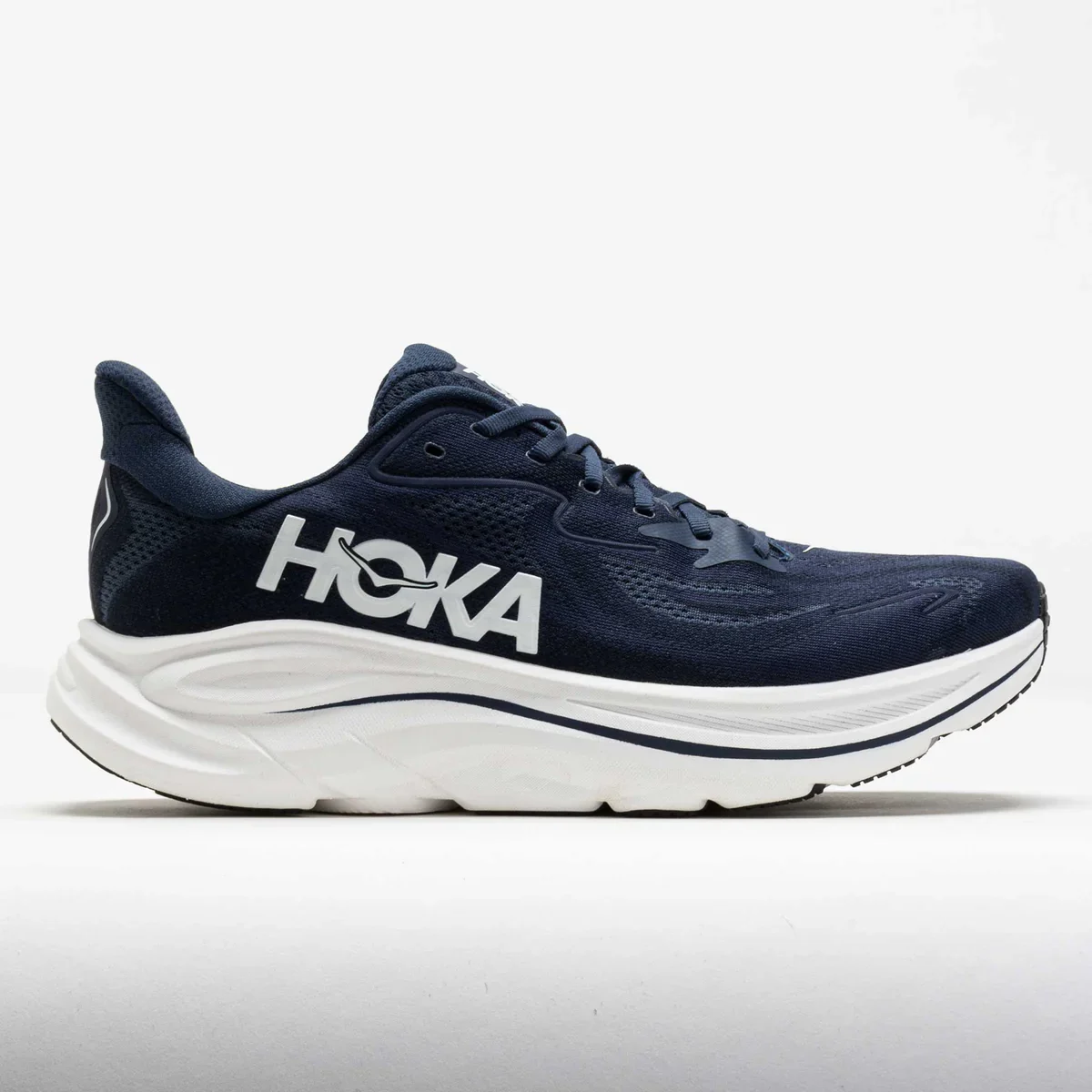
Max-cushioned EVA foam underfoot with a streamlined, plush profile for supremely soft landings. Designed for runners stacking high miles prioritizing recovery and comfort over firm responsiveness, or for those seeking comfort for a long day on their feet.
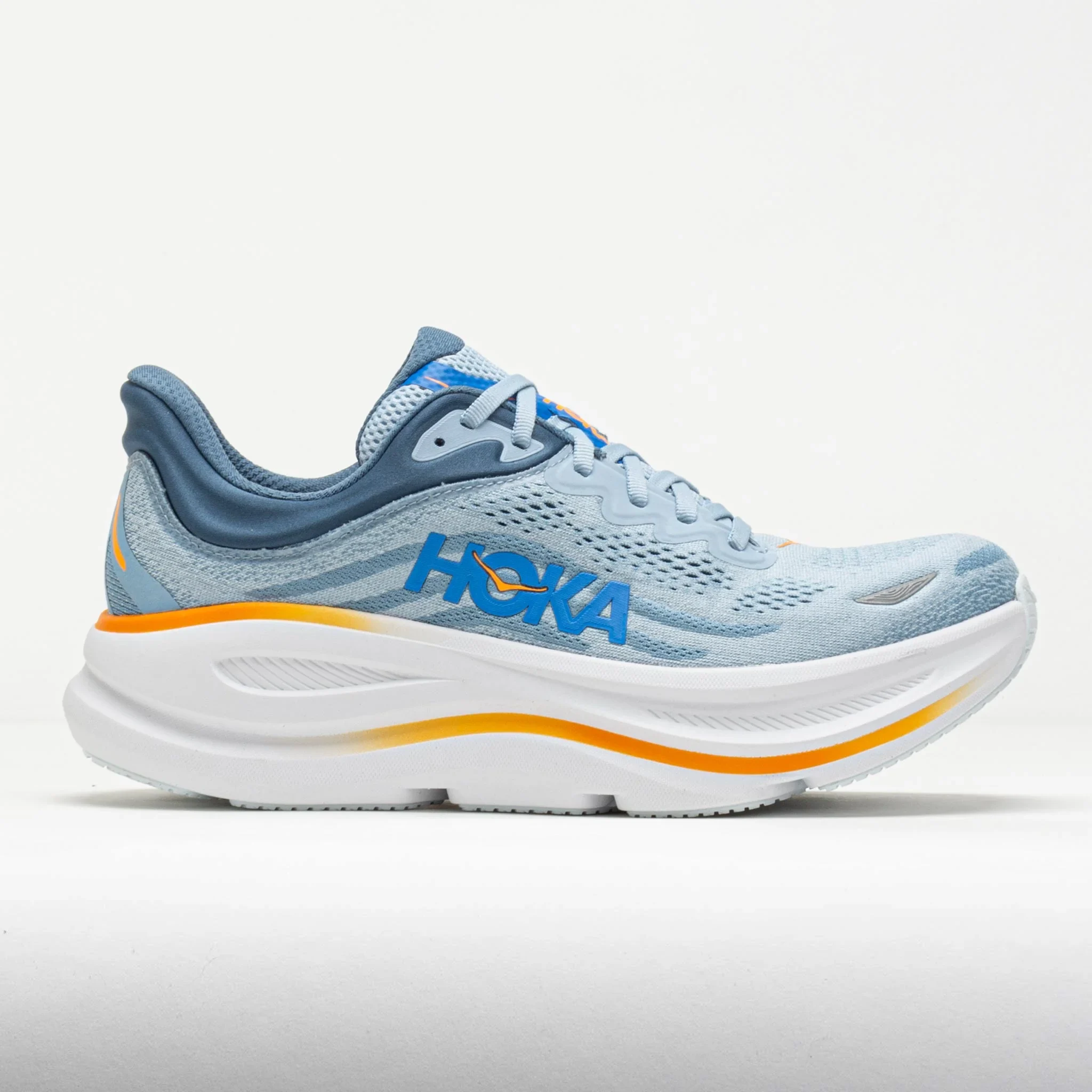
Supportive J-Frame® stability structure wrapped in lightweight cushioning offers guidance without added weight. Crafted for runners who benefit from structured pronation control in a fast, agile package.
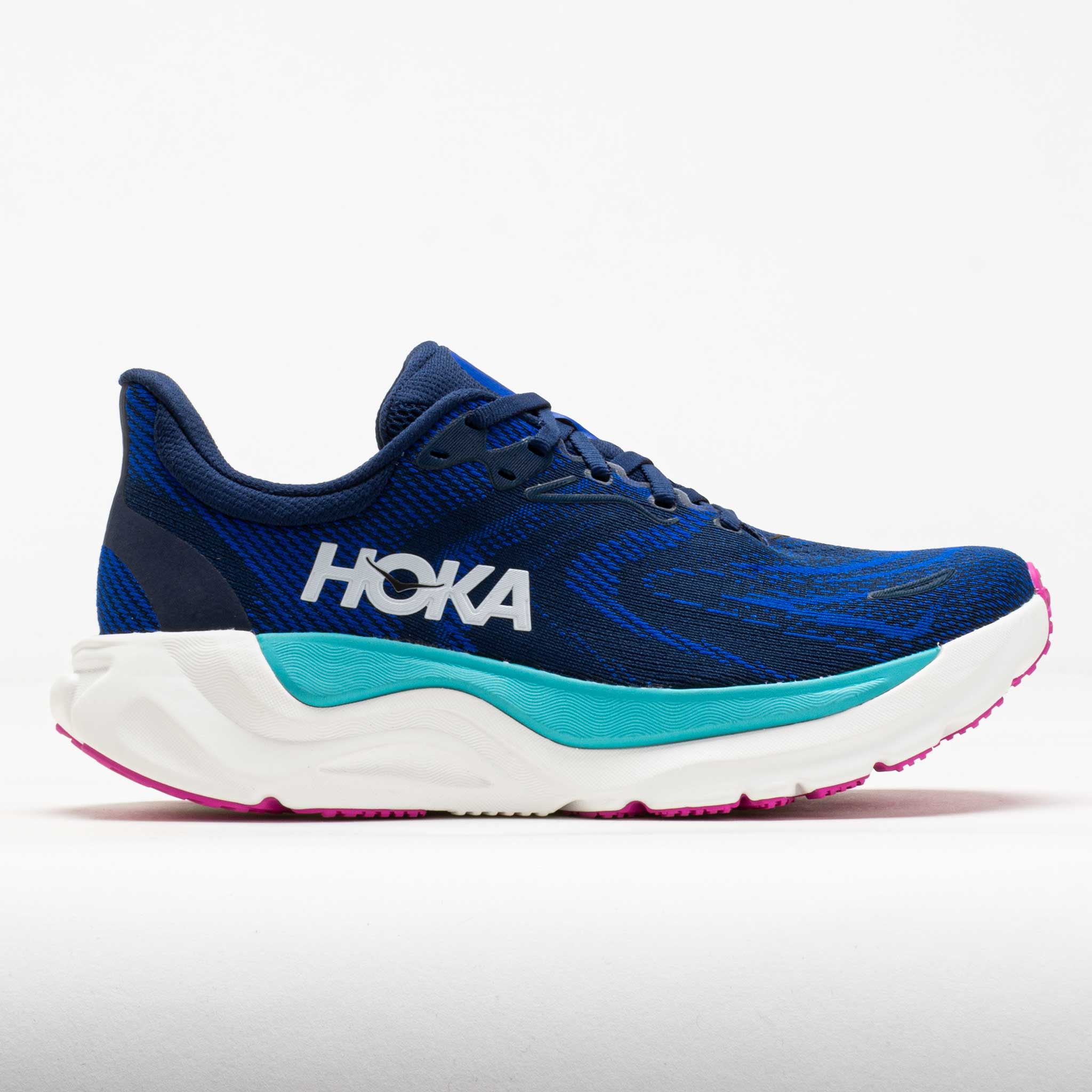
A responsive yet protective midsole with moderate stack and Trail TAC rubber outsole—built for light-to-moderate trail use and adaptable terrain. Great for those shifting seamlessly between road and trail runs.
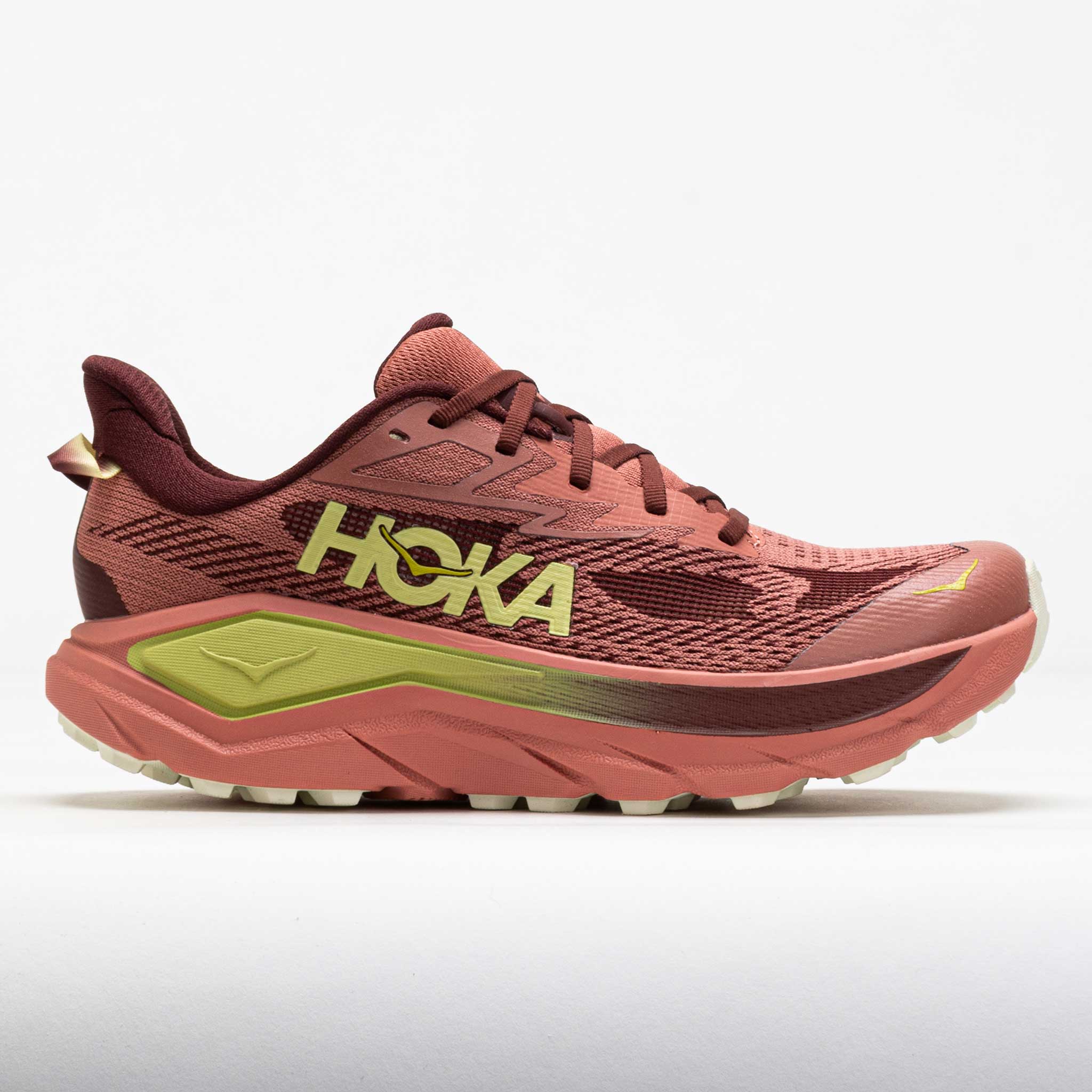
Plush midsole cushioning paired with aggressively lugged Vibram Megagrip outsole delivers stability and traction on rugged terrain. Tailored for trails that demand grip and protectiveness over varied surfaces.

The Ride 18 is a neutral daily trainer built for runners seeking a reliable, versatile shoe for everyday training. With a PWRRUN+ midsole, it delivers a balanced, cushioned ride with a touch of responsiveness, perfect for short to mid-distance runs, recovery days, or casual wear.

The Endorphin Speed 5 is a neutral, lightweight performance trainer for runners seeking a versatile, fast shoe. With a PWRRUN PB midsole, flexible nylon plate, and SPEEDROLL tech, it offers a soft, bouncy ride ideal for tempo runs, speedwork, races, or daily training.
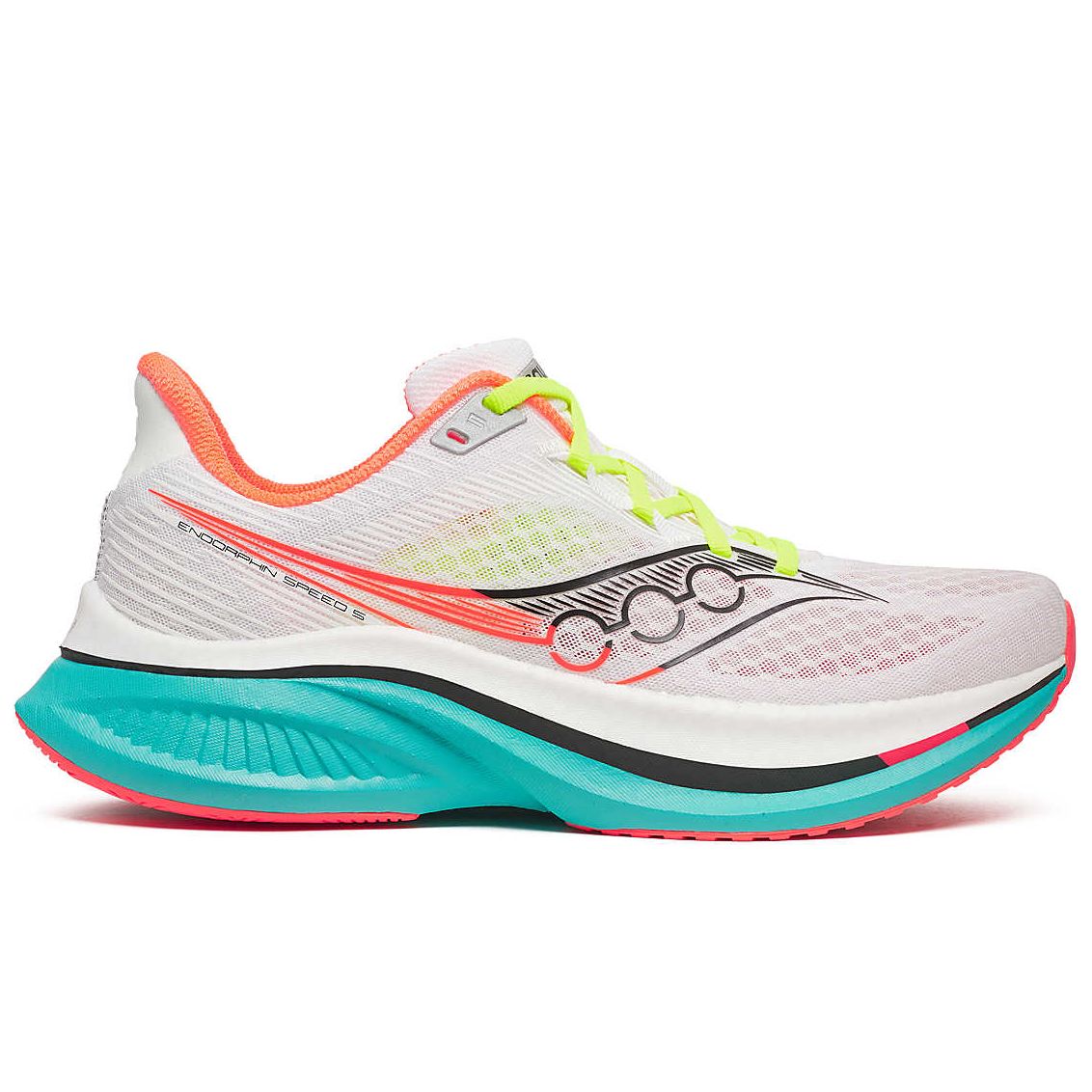
The Kinvara 16 is a neutral, lightweight trainer crafted for experienced runners seeking a fast, natural ride. With an updated PWRRUN midsole offering enhanced energy return and durability, it delivers a responsive, low-profile feel ideal for tempo runs, speedwork, or daily training.
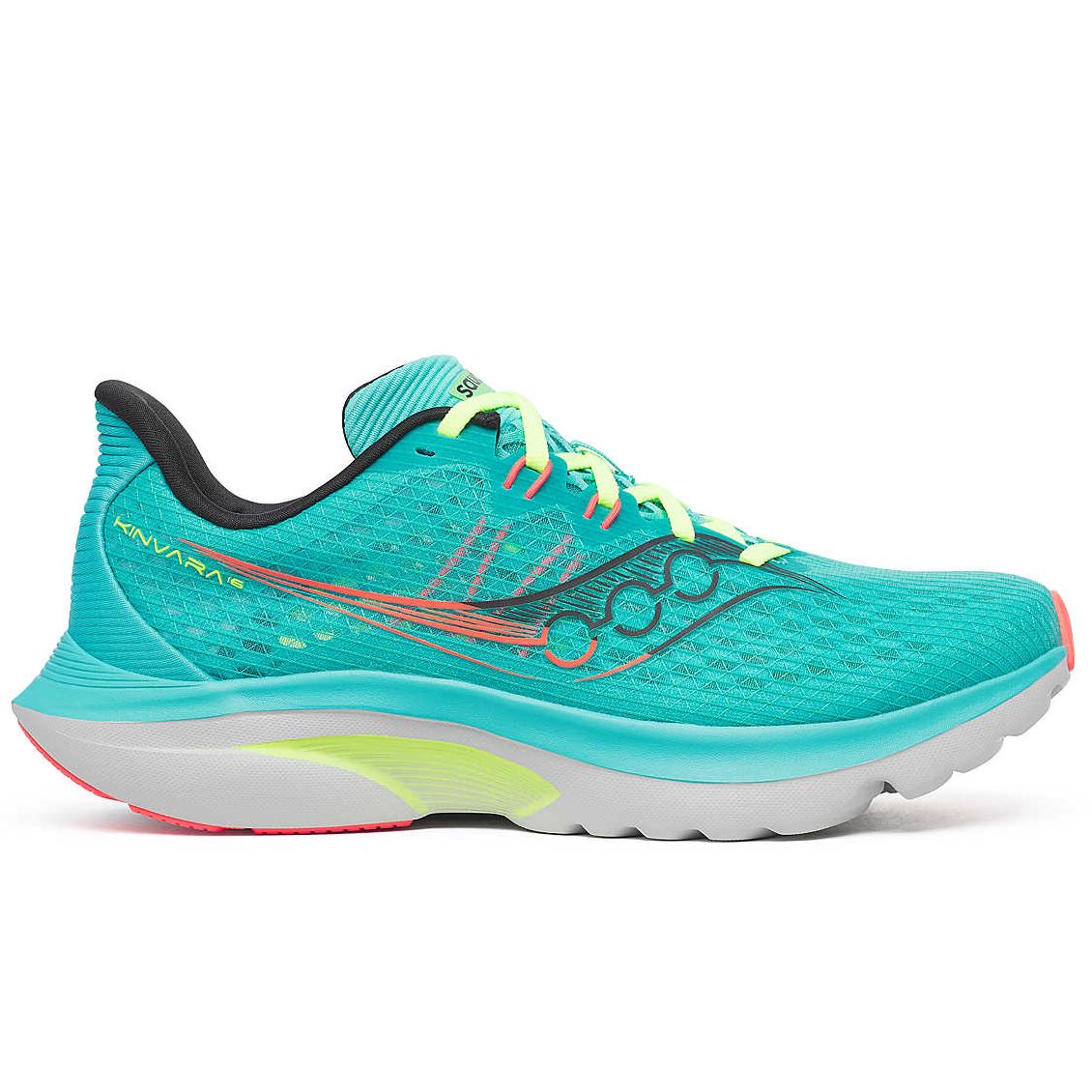
The Triumph 23 is a neutral, premium daily trainer designed for runners seeking plush comfort on long runs. Featuring a PWRRUN PB superfoam midsole, it delivers a soft, lightweight, and energetic ride, perfect for easy miles, recovery runs, or extended distances.
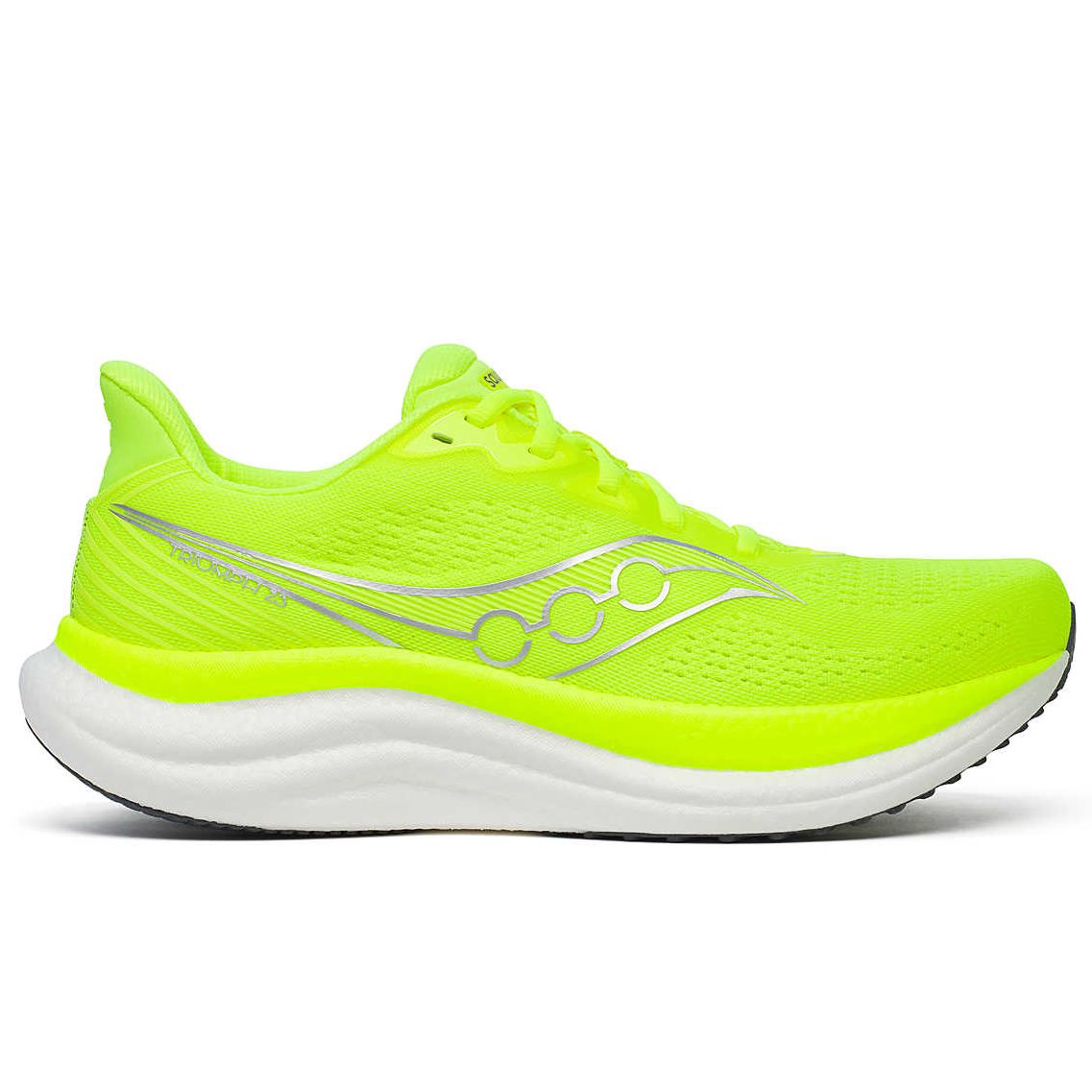
The Guide 18 is a stability-oriented daily trainer designed for runners needing mild support for daily mileage or long runs. Featuring a PWRRUN foam midsole with CenterPath Technology, high sidewalls, and a wide platform, it offers a balanced, cushioned ride with subtle guidance for overpronators, ideal for easy runs and steady-paced training.
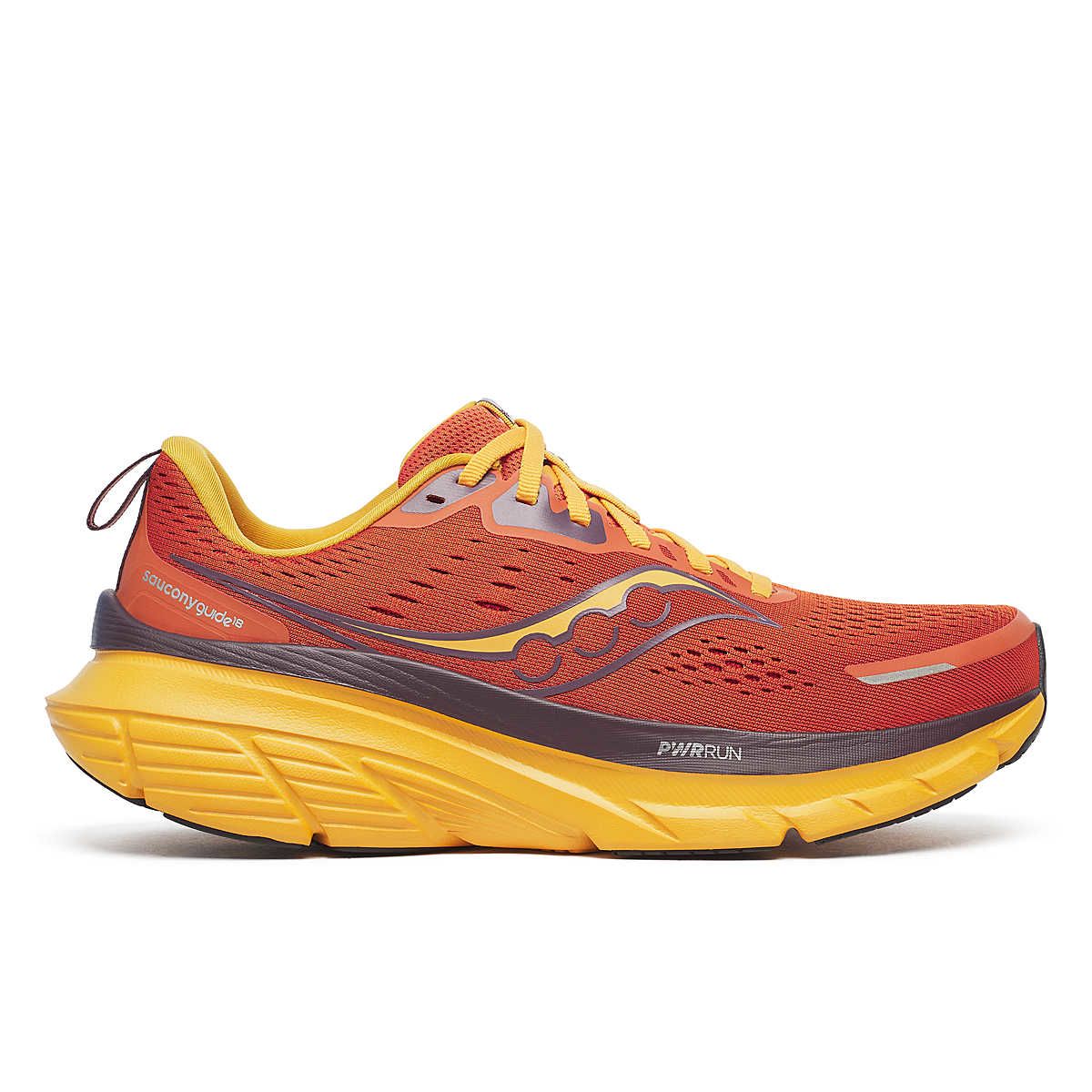
The Peregrine 15 is a neutral trail running shoe engineered for runners tackling rugged terrains. Equipped with a PWRRUN midsole and PWRTRAC outsole, it provides grippy traction and cushioned protection, making it ideal for trail adventures, from short scrambles to ultra-distance treks.
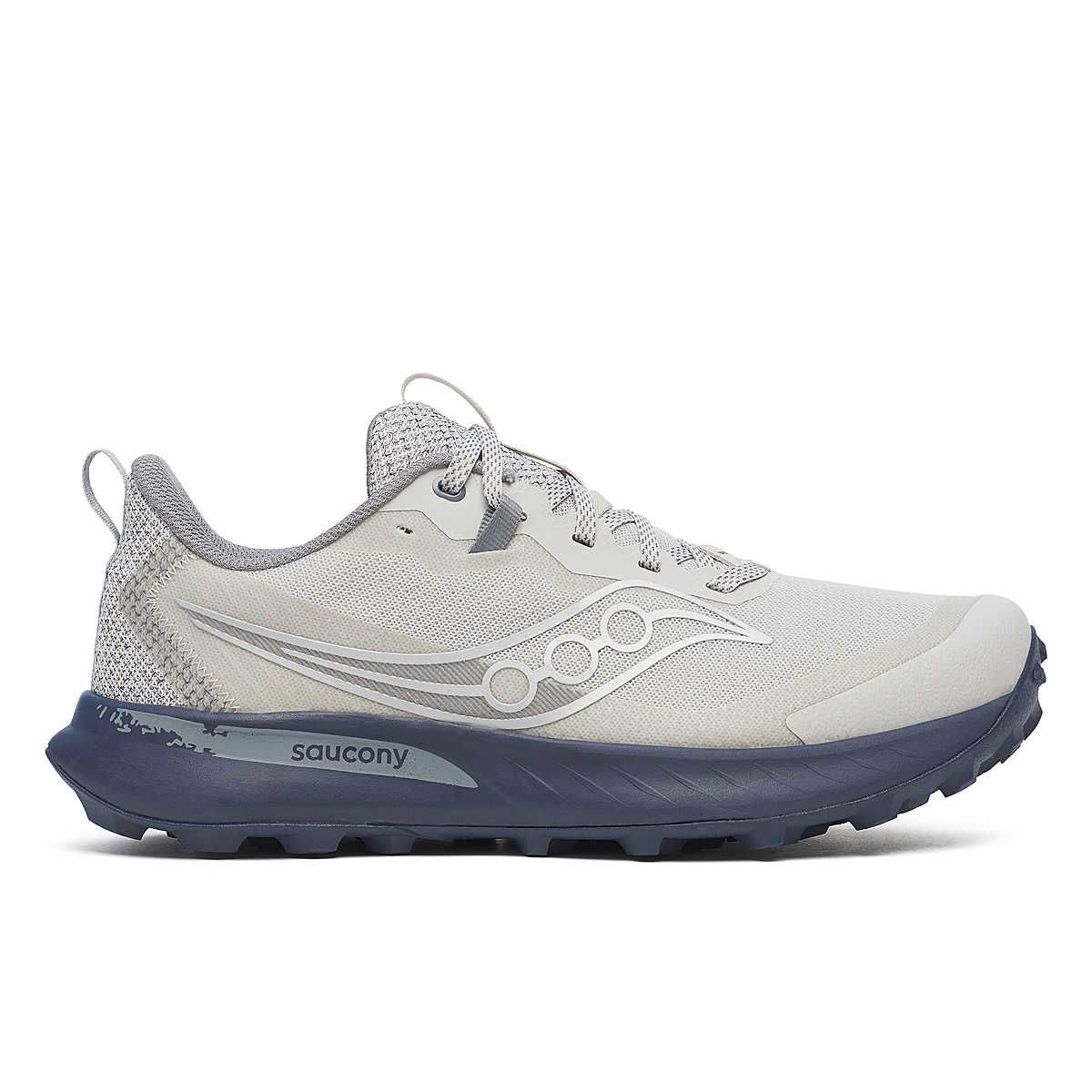
When you compare Saucony vs HOKA, one of the biggest differences lies in their design philosophy.
Saucony focuses on creating shoes that promote natural movement. Their designs often feature a moderate heel-to-toe drop (typically around 4-8mm) to encourage a smooth, efficient stride. The overall feel is connected and nimble, making Saucony a go-to for runners who appreciate ground feedback without sacrificing protection.
HOKA, on the other hand, is all about plush, protected rides. Their shoes feature higher stack heights—essentially more foam underfoot—paired with rocker-shaped soles that help guide your foot forward. Despite their chunky appearance, HOKA running shoes are surprisingly lightweight, thanks to their specialized foams.
In short:
Your preference might come down to whether you want a closer-to-the-ground feel or cloud-like cushioning for longer efforts.
Cushioning is the heart of any running shoe—and Saucony and HOKA take very different approaches.
Saucony Cushioning:
HOKA Cushioning:
Bottom line:
Both brands leverage their signature innovations to enhance performance—you just need to decide whether you prefer bounce (Saucony) or roll (HOKA).
Finding the right fit can make or break your running experience—and Saucony and HOKA cater to slightly different foot shapes.
Both brands offer select wide-width options, but in general:
Trying on a few models in person can help you dial in the best option for you.
Good running shoes aren’t cheap—so durability matters.
In terms of lifespan, both brands can easily give you 300-500 miles, depending on the model and your running surfaces.
How do Saucony vs HOKA shoes actually feel when you’re out logging miles?
Both brands offer stability without resorting to stiff, traditional posts.

Both Saucony and HOKA engineer their outsoles for different running conditions.
If your running adventures take you off-road often, HOKA’s trail lineup is hard to beat. But for road runners, Saucony provides excellent security and smooth transitions.
Nobody likes hot, sweaty feet mid-run. Thankfully, both brands design their uppers with breathability in mind.
Some HOKA models may feel slightly warmer due to their thicker midsoles, but both brands deliver options that help keep your feet dry and comfortable.
When it comes to cost, Saucony and HOKA both offer a range of prices, depending on the model and technology.
While HOKA can be slightly more expensive on average, many runners feel the exceptional comfort and injury-prevention benefits justify the cost. Either way, choosing the best running shoes means finding a pair that matches your training needs—not just your budget.
Eco-conscious runners, take note: both Saucony and HOKA are making strides toward sustainability.
Both brands recognize that protecting the planet is just as important as protecting runners’ feet—and their initiatives are expanding year by year.
So, which brand wins the Saucony vs HOKA showdown?
✅ Pick Saucony if you want a traditional, responsive ride that feels nimble and efficient. Great for runners chasing speed, training variety, and a natural stride.
✅ Pick HOKA if you prioritize plush comfort, easy transitions, and cushioning that keeps your legs feeling fresh over long miles.
In the end, there’s no “one-size-fits-all” answer. Try on a few models from each brand, test how they feel underfoot, and let your feet (and your goals) guide you to the best running shoes for your journey.

Login to your account to leave a comment.





We Want to Give it to You!
